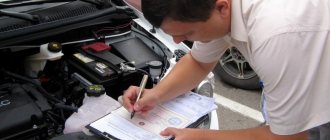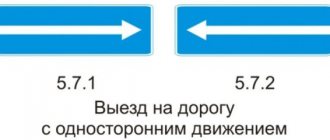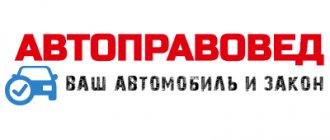Traffic regulations regarding the carriage of a passenger on a motorcycle or moped
Let us repeat once again that the clause was introduced on the basis of Resolution No. 333 of 2021
22.2(1) Transportation of people on a motorcycle must be carried out by a driver who has a driver’s license for the right to drive vehicles of category “A” or subcategory “A1” for 2 or more years, transportation of people on a moped must be carried out by a driver who has a driver’s license for the right to drive vehicles of any category or subcategory for 2 or more years.
From this logical statement it follows that for motorcyclists, the driver can transport passengers only if he has more than 2 years of experience for his corresponding category of motorcycles. But for mopeds, the driver must simply have more than 2 years of experience. Of course, this does not in any way disparage other rules for the transportation of passengers stipulated in Chapter 22 of the Traffic Regulations of the Russian Federation “Transportation of People.” To be sure, check them out.
The speed limit for motorcycles on motorways is 110 km/h
In paragraph 10.3 of the traffic rules, which regulates movement on highways, motorcycles are also added to the list of vehicles. If previously motorcycles on motorways were allowed to travel at a speed of no more than 90 km/h, now the speed limit for motorcycles on motorways is 110 km/h, the same as for cars.
10.3.
Movement outside populated areas is permitted:
- motorcycles, cars and trucks with a permissible maximum weight of no more than 3.5 tons on highways - at a speed of no more than 110 km/h, on other roads - no more than 90 km/h;
- intercity and small buses on all roads - no more than 90 km/h;
Fine for transporting passengers on a motorcycle or moped with less than 2 years of driving experience
As for the Code of Administrative Offenses of the Russian Federation, with the advent of a new resolution in 2017, it was not updated. This means that here one should be guided by the “general” part for violations of the rules for transporting passengers, namely part 1 of Article 12.23 of the Code of Administrative Offenses of the Russian Federation.
Violation of the rules for transporting people, with the exception of cases provided for in parts 2 - 6 of this article, entails the imposition of an administrative fine in the amount of 500 rubles.
From all this it follows that the minimum fine may well be issued when transporting a passenger if the driver of a motorcycle does not have more than 2 years of experience for the corresponding category, and if the driver of a moped simply does not have more than 2 years of experience.
IMPORTANT!!! It should be noted that a fine under Part 1 does not at all detract from issuing a fine under another part of the same article if the violation is more serious. So, if a novice driver carries passengers on his motorcycle (moped), and such passengers are children under 12 years old, the transportation of whom is completely prohibited in the back seat of motorcycles and mopeds, then the fine will be issued according to a more stringent part. That is, they will issue a fine under Part 3, Article 12.23 of the Code of Administrative Offenses of the Russian Federation, and this is no longer the minimum fine, but 3,000 rubles! Children under 12 years old can only be transported in front, in front of the driver, if the motorcycle seat allows it.
30.01.2017
There are no special courses that train motorcycle passengers, and things that are obvious to us do not exist for them at all. The presence of a passenger on a motorcycle, to one degree or another, affects its handling. The weight distribution changes, the frontal resistance to air flow increases, and the load on the engine increases. To make life easier for the driver, the passenger must follow the rules listed below, the existence of which, first of all, the motorcyclist should know.
The rules of passenger behavior are not complicated, but failure to comply with these rules can lead to very dire consequences. They are useful to know for beginners - pilots, and for female pilots, and indeed for any passenger on a motorcycle without a sidecar trailer.
Follow the driver's recommendations regarding your behavior on a motorcycle - this is the basic rule of the passenger.
It is known that the center of gravity is one of the key parameters in the control of any ground transport. And the lower it is, the better this vehicle steers. This applies primarily to a motorcycle, because... turns the motorcycle at speed by moving the center of gravity and by rounding the rubber to the edges, rather than by turning the steering wheel.
We sit down and get off the motorcycle ONLY when the pilot gives the command that he is ready. It is better to perform these actions on a step, otherwise there is a lot of chance of everyone falling together.
Sit comfortably right away, before you start moving! So as not to fidget and rub in along the way. Fidgeting in the rear is especially critical in turns, because shifts the center of gravity and upsets the balance of the motorcycle. On heavy motorbikes with a light passenger this is not so dangerous (although very scary), while on sports and light motorbikes this often leads to falls or drifting into oncoming traffic.
We place our feet ONLY on the footrests! We don’t use chrome pipes or airbrushing, and we don’t throw it on the pilot, like in the movies. It certainly looks cool, but it is strictly contraindicated for beginners and uncoordinated couples. It is best to wrap your LEGS tightly around the pilot and squeeze with your inner thighs. This lowers the center of gravity. Plus, you don’t need to hold on tightly with your hands if it doesn’t restrict the pilot’s movements.
Under no circumstances should we hold hands or shoulders of the pilot! When braking, this risks causing the passenger to suddenly lean on one of the hands more than the other, while their hands hold the steering wheel.
There is no need to try to “help” the pilot with your body in turns, just repeat his movements, merge with him into one whole.
Do not put pressure on the helmet from behind, just a firm touch is enough. It's just uncomfortable, my neck gets stiff. It’s better to press a little closer so as not to knock on the back of his head every time you brake.
If you see holes or potholes ahead, “press” your feet on the footrests, as if trying to stand up, but you don’t need to stand up (tear your butt off the seat). When and at what speeds this will need to be done - you will understand only with experience; you need to feel it on which pits and potholes you can simply press on, and on which you need to stand up. Here it is better to consult with the pilot and do what is more convenient for him. This also lowers the same notorious center of gravity, and prevents you from being “thrown out” of the saddle.
Don't look very far to the side of the pilot's head. Even if you are very interested in what is ahead, this VERY interferes with your visibility back, often critically.
NEVER shout or make sudden movements on your motorcycle. Even if it’s very scary or angry or for some other reason.
If you are leaning back, apply more pressure to the pilot with your legs and do not lean to the sides while moving. In general, always try to be as motionless as possible while moving; if you hold yourself correctly, the pilot will do everything for you.
Always encourage pilots with cookies and other simple and tricky, maybe even sophisticated joys.
Source
Source
Does the ban apply to transporting passengers in category A with less than 2 years of experience?
Actually, this paragraph arose due to the fact that many motorists are ready to understand clause 22.2(1) in such a way that 2 years of experience relates only to subcategory A1. However, in the explanatory note to the resolution there are the following lines that will dot the i’s.
Restrictions have been introduced for drivers with up to 2 years of driving experience. Thus, they cannot tow other motor vehicles with the vehicles they drive. They are also prohibited from transporting people on a motorcycle (drivers with category A, A1) or moped (drivers with any category).
Here it becomes finally clear that the restrictions apply equally to both categories A and A1. That is, hiding behind category A and saying that I have it and I don’t need 2 years of experience to transport passengers will not work!
Pedestrian driving a motorcycle
“Pedestrian” is a person who is outside a vehicle on the road or on a pedestrian or bicycle path and is not working on them. Persons moving in wheelchairs, driving a bicycle, moped, motorcycle, carrying a sled, cart, baby or wheelchair, as well as using roller skates, scooters and other similar means for movement are considered pedestrians.
A motorcycle driver, like cyclists and mopedists, can become a pedestrian at any time. To do this, he just needs to get off the motorcycle and drive the motorcycle next to him.
Motorcyclists can use this technique for their convenience:
For example, a motorcycle is driving along a country road that has a dividing strip. He wants to turn left (to the village), but turning left is impossible because a median fence runs through the intersection. Therefore, the motorcyclist is forced to drive straight and turn around after a few kilometers along a special turning loop.
However, there is another option - to dismount and cross the road at a pedestrian crossing, which is located next to a public transport stop.
In addition, you need to remember that a pedestrian driving a motorcycle on the roadway must move along the flow of vehicles, i.e. on the right side of the road. Paragraph 4.1 of the traffic rules:
When walking along the edge of the roadway, pedestrians must walk towards the movement of vehicles. Persons moving in wheelchairs driving a motorcycle, moped, bicycle, in these cases must follow the direction of travel of the vehicles.
Fines for motorcyclists in 2020
If we describe the situation as a whole, motorcyclists are subject to exactly the same fines as car drivers. They are described in detail in the section "".
Nevertheless, let’s look at the fines that raise the most questions among motorcyclists:
Let me remind you that this article contains points of rules for motorcyclists, which differ from the rules for drivers of passenger cars. If you are interested in a situation that is not discussed above, it means that in this situation, motorists and motorcyclists are guided by the same rules. Nevertheless, if you still have questions, write them in the comments to the article.
What does the traffic regulations say?
Traffic rules do not prohibit transporting children on motorcycles. However, they are very clear about the age and a number of safety features. Transportation of children in accordance with clause 22.9 of the Traffic Regulations is permitted from 12 years of age.
You should know what categories two-wheeled vehicles are divided into:
- light scooters with an engine capacity of no more than 50 cm3 and a speed not exceeding 50 km/h;
- heavy mechanisms with a large cylinder capacity and a maximum speed of 300 km/h.
You need to understand that the more powerful and larger the motorcycle, the more dangerous it is to transport passengers, especially children.
For driving underage
In accordance with the Federal Law “On Road Safety”, the earliest age at which a person can obtain the right to drive a vehicle is 16 years old. In this case, we are talking about category M licenses, which give the right to drive scooters and mopeds.
You can start studying theory and practice in driving courses as early as adolescence, but a minor will not be able to obtain a license - a fine will be issued for riding a motorcycle before the specified age. Moreover, since the young offender has not reached the age of majority, it will not be he himself who will be fined, but the person who handed over the vehicle into his hands, namely the owner of the motorcycle. The fine is quite impressive and amounts to 30 thousand rubles.
Cross
Cross bikes are a special type of two-wheeled equipment designed for motocross. Such motorcycles are not equipped with lighting equipment, and the special rubber does not provide sufficient grip on the road surface.
Cross bikes are the only two-wheeled vehicles that can be driven without a license. But taking into account the specifics of the vehicle, it is prohibited to use it on public roads. You can get a fine for riding such a motorcycle. Motocross bikes must be delivered to the tracks by special transport.









